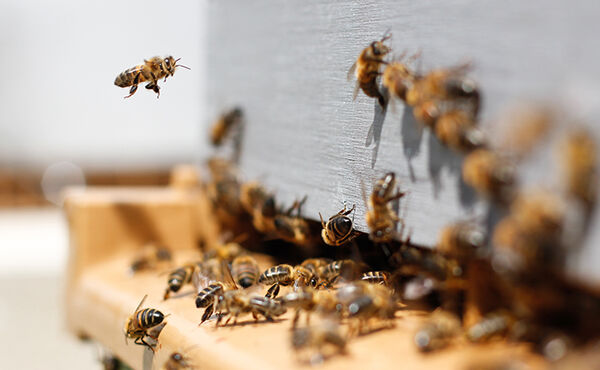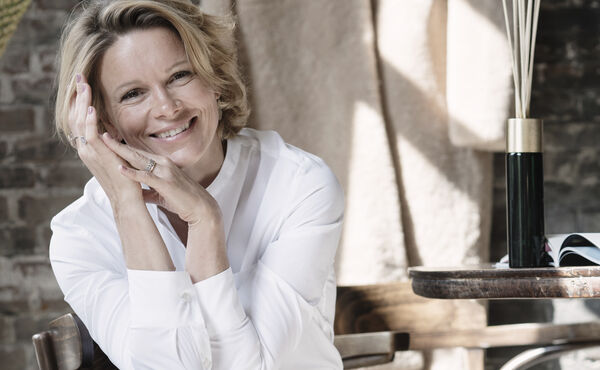Though best-known for their deliciously rich honey and signature fuzzy stripes, bees actually play an incredibly crucial role in our global ecosystem. Around a third of the food we enjoy every day relies on pollination by bees, yet these hardworking insects are under increasing threat.
From avocados and blueberries to almonds, citrus fruits, soybeans and more, many of the foods we eat and the crops relied upon around the world require pollination. While some birds, bats, butterflies and other insects play a role in this natural cycle, busy bee colonies pick up a huge portion of the work. Unfortunately, bee populations worldwide are in steep decline. In Europe, 10% of the bee population is believed to be endangered.
While shifts in the climate and the use of certain harmful pesticides in farming also contribute to bee decline, a major cause is the loss of natural habitats for wild bees. Luckily, that’s exactly where beekeeping can help. Well-managed, cared for hives are a lifeline for boosting bee numbers and keeping pollination levels up. The even better news is that beehives can be kept almost anywhere, as long as the bees have a warm, sheltered spot to thrive in and access to flowering plants.
Want to do your bit for the bees? Get started with our top beekeeping tips for beginners.
1. Do your research
There’s a lot to learn about caring for bees well, so doing your research is crucial. “The best advice I could give to someone who wants to get involved in beekeeping is to learn as much as you can before getting any bees,” says Amanda Johnston, a full-time beefarmer who recently graduated from the Rowse Bee a Bee Farmer apprenticeship scheme. “Some hands-on experience from fellow beekeepers is essential as you’ll get to know whether it’s right for you or not. A common saying in beekeeping is: 'bees don't read the books', so however much you read, the bees will always surprise you!”
2. Connect with local beekeepers
The beekeeping community is a friendly one packed full of advice and experience, so Johnston advises connecting with your local beekeeping association while you’re getting started. “It’s a great way to meet other beekeepers, look through beehives and get all kinds of general advice on beekeeping and the equipment you’ll need,” she explains. Many also run experience days and beginner courses that you can sign up to for invaluable insight.

3. Prepare your equipment
If you’re starting from scratch you’ll need to invest in some essential beekeeping equipment, the hive being the most important. Modern hives have moveable frames which help to protect bees from harm during inspections, maintenance or honey harvesting. You’ll also need a good pair of gloves and a veil to protect your face from stings. While a full bee suit can help to protect the rest of your body from the occasional bee sting, wearing full length clothes should also do the trick.
4. Create a pollen haven
Got your hive ready to go? Before you bring in the bees, consider creating a year-round pollen haven. “Nectar is not just for summer, bees and other pollinating insects will be on the hunt at other times of year too,” says Michael Perry, gardening expert at Rowse. “Spring nectar sources can help pollinators to refuel after their winter hibernation period, and in autumn it can help them to build energy reserves for the months ahead. Be sure to plant with the widest range of blooming periods in mind, so the wildlife never goes hungry.”
5. Bring in the bees
Once you’re all prepped, it’s time to buy the bees. This is where your local association can really help with recommendations, as sourcing local bees will mean that they’re already adapted to your area and more likely to thrive. Typically, bees come as a ‘nucleus’ which will contain a laying queen bee along with a few frames of already established bees, brood (growing larvae) and food. It’s worth starting small as a beginner, and building up your bees and the size of your hive as you become more experienced.
6. Consider a rooftop garden
Limited garden space? Rooftop gardens are increasingly popular in built-up city areas and, if planned with bee-friendly plants in mind, can often be far more useful to bees than great expanses of green where few flowering plants grow. While you may need to check your neighbours are on-board with your beekeeping plans first, rooftop gardens can still be a great place to keep bees provided there’s a warm, sheltered corner for your hive to stand in. Keen to green-up your rooftop? Check out our guide to the benefits of rooftop gardens.
.jpg?sw=1440&sh=445&sm=fit&cx=0&cy=0&cw=1440&ch=445&sfrm=jpg)

.jpg?sw=600&sh=370&sm=fit&cx=0&cy=0&cw=600&ch=370&sfrm=jpg)

.jpg?sw=600&sh=370&sm=fit&cx=0&cy=0&cw=600&ch=370&sfrm=jpg)

